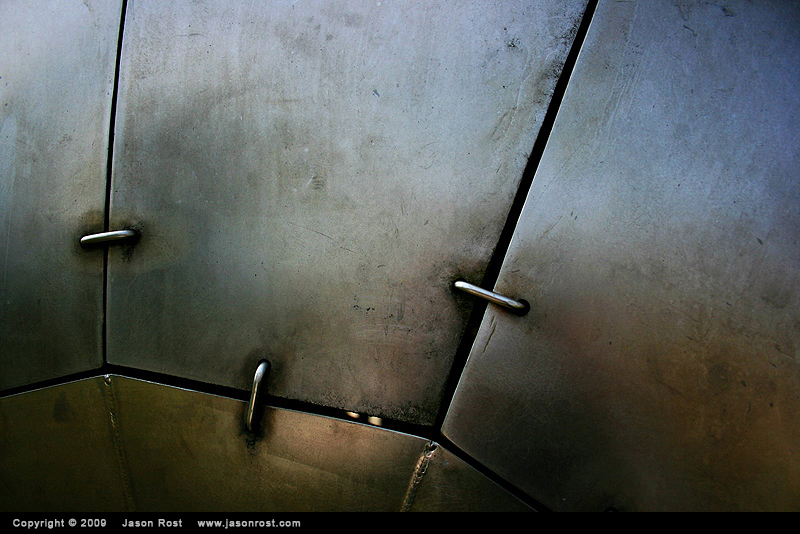Ah EQ. The first type of DSP you learned how to use in school to make your sounds clean, bright, warm, etc. EQ is so much more interesting and powerful than just changing tonal balance though and I want to really focus on some of the crazy sound design we can do with an EQ, some by exploiting the DSP going on under the hood that makes an EQ work. I’ll be going through some of my favorite techniques that you probably won’t find in your Audio 101 textbook.
Do keep in mind you’ll hear clipping and some clicks and pops throughout the videos because of how difficult it can be to control the outputs of these super mangled EQs. For when I actually use these in my work, they are rendered out and any undesired artifacts are edited out.
Make Anything Sound Like METAL

Not talking about my favorite genre of music, but the thing that swords and hammers are made of. This one is a pretty obvious one but it’s super effective for adding some nice metallic tone to things like impacts especially.
What makes metal sound like metal?
Metal or metal-like impacts are defined as having a “clangorous” sound. What this actually means in practical use is having several sharp resonant frequencies that are not harmonically related to each other. Something like 500hz + 1000hz (an octave) would not sound clangorous but something like 500hz + 553hz will get us much closer to a metallic sound. Usually for something to really sound like metal it will need more than just two resonances and you can balance how musical/tonal you want it to be by adjusting the number of resonances. When working digitally this is easiest to do with a parametric-EQ.
Let’s make my car door getting slammed sound more METAL, also get a toilet to sound METAL
Basically I added as many bands as I could and then randomly shuffled them around and made sure they all had a very high-Q. If you want a more subtle metallic shing, concentrate the resonances on the high end. If you want a more bell-like obvious tonality, focus on the mid and low-ranges. Lower pitched high-Q bell curves have a tendency to feedback more easily which is great for the bell-like tones but be careful of it getting really loud.
You can use this same technique on a more constant noise, like an engine or the hum of a toilet for example, to make a metallic drone. Modulate the frequencies of your EQ curves and you can get some other crazy sounds.
Let’s Turn Our EQ Into a Synthesizer

Yeah that’s right. Since EQ basically works with a series of short feedback loops, we can push it really hard and cause it to feedback a little to make a metallic or glassy hit sound. This type of synthesis is basically a variation of Modal Synthesis.
Metal or Glassy hits
This is the most simple and least dangerous to your ears. Basically we just need one EQ that lets us have a very high Q and gain per band and some sort of impulse signal. You can try making some sense of the frequencies you choose or just go random and see what you end up with. I recommend boosting as high as you can and if you have trouble getting it to resonate enough, try adding a second instance of the EQ, but be careful because things can get loud.
An easy way to make these more interesting is to add some reverb. I’ll sometimes add a copy of the same EQ after the reverb instance to get even more exaggerated resonances.
These types of sounds are really useful as source when designing other sounds. I often use these when designing magic spells or UI sounds.
Laser pew, other kinds of pews
This works great as an impact sweetener for sci-fi effects and adding some impact to whooshes and other aggressive movements. The basic idea of a pew is a quick movement downwards from a high to a low frequency. There’s lots of ways you can go about it with an EQ and what you do can lead to pretty different results. For my example I’m doing the simplest kind which is just a very resonant bandpass EQ that modulates from the highest to the lowest frequency my EQ can operate with.
Like I mentioned before, lower frequencies tend to resonate more aggressively than higher ones so be careful about sub feedback and you’ll most likely have to add some fades to keep things under control.
Experiment with adding more bands and having different EQ points move at different speeds or directions!
Glitchy Distorted Madness
This is by far the most dangerous technique to your ears and equipment. Please be careful when trying this! THINGS CAN GET REALLY LOUD! Render everything and lower the volume before you listen.
This isn’t really a “technique” as much as me just abusing the near-unlimited FX stacking you can do in Reaper with a dangerous curiosity. To be honest the process for this is pretty random and that’s a lot of the fun of it. I just keep adding instances of my EQ and push everything as hard as I can with random settings to see what happens. I very strongly recommend muting your output when doing this, rendering/exporting the audio and drastically lowering the volume before you listen to the madness you just created.
This technique has led me to really crazy screeches with fairly unpredictable movements in pitch. It’s worth experimenting by taking in and out instances of your EQ and seeing how things change, or also raising and lowering the input signal to increase or decrease the feedback/distortion.
EXPERIMENT!
These are only some of the possibilities for sound design by using EQ in unconventional ways. Feel free to let me know in the comments if you have any cool sound design ideas using EQ!
